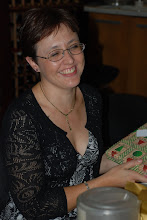Ramadan is expected to begin this week in the UAE. Most people are not 100% sure exactly when it will be, as it is dependent on the sighting of the new moon. Generally, you can make an educated guess, and predict that it will begin around 11 days earlier than it did the year before. This year, that would make it on 4 October.
Except there will be an eclipse of the moon that night, making it impossible to see the new moon, so its likely to be on 5 October. We're waiting for the Ministry of Islamic Affairs to confirm, which will probably happen in the next day or so.
The weeks before Ramadan are frenetic, and the shops are crowded. Most Moslem families stock up now on the groceries they will need for the Iftar meals every evening (thats when the fast is broken). Its especially hectic for the wives and mothers, who try to prepare as many meals in advance as possible.
Iftar (which occurs at sunset) coincides with bedtime for many children, and its hard work to get everything done at once. One lady I met this week was frantically preparing samoosas. Not only does she make her own pastry (you can buy it frozen), she also prepares all the fillings, and then wraps and freezes them - and she was going to make about 100. Its quite complicated apparently. I am not sure of the technique, but I was given a taster and they sure are delicious!
The days are filled with coffee mornings, and gettogethers, as everyone tries to get in daytime socialising before Ramadan starts. You see, most restaurants, coffee shops and fast food outlets are closed during the day, and only open after Iftar.
Socialising during Ramadan is pretty much confined to the Iftar meals, which can go on long into the night. The Iftar meals are traditionally very social affairs, and large quantities of food are often required. Also, as part of the charity drive that happens around Ramadan, extra meals are prepared and given to those less fortunate.
The fast itself is broken at sunset with dates and milk or coffee. Traditions are often specific to cultures or countries - for example, in Jordan, dates are always eaten in sets of 3. I'm still learning about some of the other traditions.
As part of my own cultural learning programme, I'm on a mission to taste some of the regional delicacies that are likely to be served. So far, the only one whose name I can remember is Tabouleh, which is a salad of very finely chopped herbs, cucumber and tomato.
I have also tasted a baked chicken dish, which is cooked with whole roasted almonds, and served with a yoghurty lemon dressing. The mixed chickpea and rice dish is also a staple, used mostly as a side dish. Baked hammour (a local fish) is also popular.
Tahini and hummous are served on the side or as starters with fresh flat breads. The bread is torn into bits and the tahini or hummous is scooped up with the bread. After dinner, rich sweets (often called Iranian sweets) are served. The central ingredients are generally phyllo pastry, honey and roasted pistachio nuts. These have become a favourite of mine already. I promise to share more of the delicacies (and their names) as I learn more!
Saturday, June 13, 2009
Subscribe to:
Post Comments (Atom)

No comments:
Post a Comment